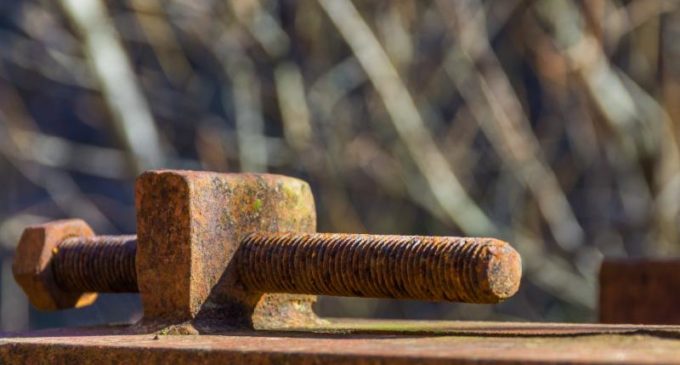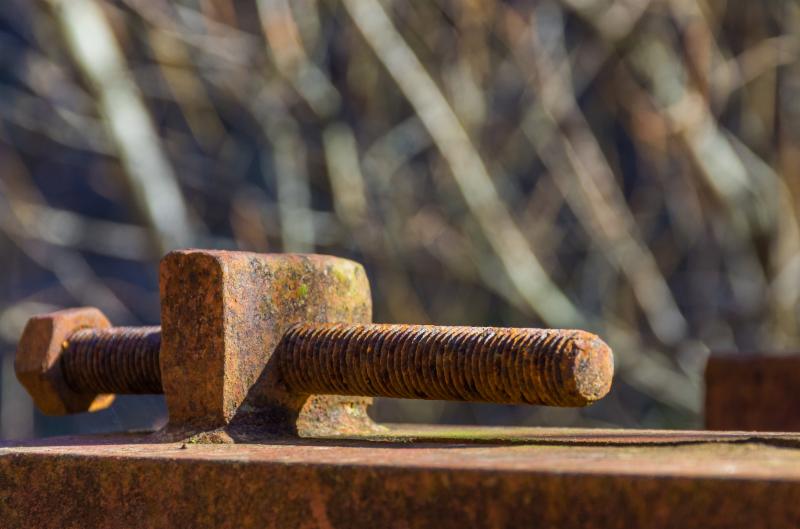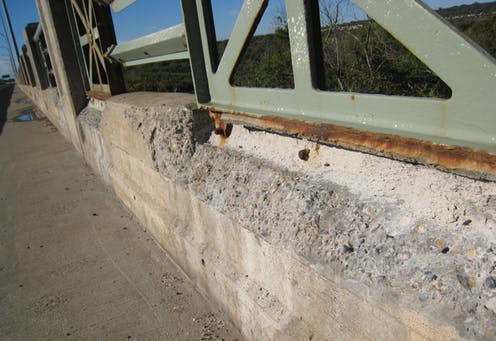Types of Stainless Corrosion


Corrosion results in billions of dollars of lost income across the U.S. Determining if a fastener will be attacked by corrosion can be a primary factor in achieving cost efficiency for long-term maintenance, according to Confast Concrete Fastening.
“Fasteners will corrode and may lose some load carrying capacity if they are installed in corrosive areas or exposed to different types of corrosive materials,” Confast states. “The areas and materials that can create a corrosive environment range from pressure treated wood (ACQ), salt water, ocean salt air, fertilizers, and exposure to two dissimilar metals and other elements that are corrosive.”
TYPES OF STAINLESS CORROSION
1. Uniform Attack – This general corrosion occurs when there is an overall breakdown of the passive film. The entire surface of the metal will show a sponge type of façade because halogens penetrate the passive film of stainless and allow for corrosion. Active halogens are fluorine, chlorine, bromine, iodine and astatine.
2. Crevice Corrosion – Corrosion with stainless fasteners in seawater environments due to the low PH of salt water. Chlorides pit the passivized surface in the area where low PH saltwater attacks the exposed metal. Lacking the oxygen to re-passivize, corrosion spreads. This corrosion is common in oxygen-deprived spaces, i.e. under a fastener head.
3. Pitting – Similar to Galvanic Corrosion, this type of corrosive action results from passivation in a small spot on stainless steel that becomes an anodic. The passivized part remains a cathode, and causes pit-type corrosion.
4. Galvanic Corrosion – Putting two dissimilar metals in an electrolyte produces an electrical current. The current flows from the anodic metal and towards the cathode metal. This process will slowly remove material from the anodic metal. Seawater can act as an electrolyte, which is the reason that galvanic corrosion is a common problem. 316 stainless steel may be most effective in a marine environment.
5. Intergranular Corrosion – Stainless steels contain a small amount of carbon. At extremely high temperature, as in welding, the carbon uses chrome to form chromium carbide around it, and creates areas of chrome deficiency that lessen corrosion protection.
6. Stress Corrosion – Referred to as stress corrosion cracking or chloride stress corrosion. Chlorides can be the greatest antagonists against stainless steel, and are a common chemical found in many environments. The effects on stainless can be small in most applications. However, in some environments, such as indoor swimming pools, the effects can be severe and possibly hazardous. If a stainless part is under tensile stress, then pitting may increase deepen and cracking could occur.
 Stainless steel is a steel alloy with a minimum of 11% chromium content by mass, and is commonly used to prevent corrosion.
Stainless steel is a steel alloy with a minimum of 11% chromium content by mass, and is commonly used to prevent corrosion.Concrete Fastening Systems, Inc. has been involved in the concrete anchor business since 1981 through working on jobsites as well as by meeting with engineers and architects. Concrete Fastening Systems, Inc. sells its own brand of wedge anchors under the name CONFAST at http://www.confast.com.


There are no comments at the moment, do you want to add one?
Write a comment